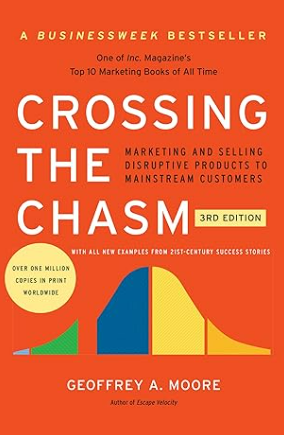“The ability to learn faster than your competitors may be the only sustainable competitive advantage.” — Arie de Geus

Companies must innovate and transform to stay ahead in today’s fast-paced digital era. Digital transformation is a strategic necessity, integrating digital technology into every aspect of business.
This post is part of my Map to Success in the Digital Age Series. You need the map to follow it.
https://thejourneyisdigital.medium.com/the-treasure-map-to-success-in-the-digital-age-4b51202ec99b
However, digital transformation is costly, requiring investment in new technologies, talent, and processes. Here, stable revenue streams, or “cash cows,” are key.
Wait, What is a Cash Cow? The Growth and Share Matrix
The terms “cash cows,” “dogs,” “question marks,” and “stars” originate from the Boston Consulting Group (BCG) Matrix, developed in the 1970s. This matrix is a business tool used to evaluate a business brand portfolio’s strategic position and potential. It categorizes a company’s business units or products into four quadrants based on market growth and market share. The BCG Matrix helps companies allocate resources and is used as an analytical tool in brand marketing, product management, strategic management, and portfolio analysis.

- Cash cows represent business units with high market share in a mature, slow-growing industry. They generate more cash than needed to maintain their market share, making them a source of stable income and profit with little need for further investment.
- Dogs, or pets, are units with low market share in a mature, slow-growing industry. These are considered the least valuable to a company because they generate just enough cash to maintain themselves but do not provide significant income or growth potential.
- Question marks are businesses with low market share in a high-growth market. They require a lot of cash to increase their market share but have the potential to become stars or cash cows if successful.
- Stars are units with a high market share in a fast-growing industry. They are seen as leaders in their respective markets and require significant investment to sustain their growth and market position.
Cash cows are the financial bedrock for innovation. They are the business units, products, or services consistently delivering strong profits with little need for reinvestment.
Think of Microsoft’s Windows or Coca-Cola’s classic soda — market leaders that provide a reliable financial base. Main products or cash cows provide stable revenue streams that enable a company to invest in new technologies, talent, and processes required for digital transformation without compromising operational stability.
Digital transformation is more than just adopting new technology; it’s about reshaping business models, improving customer experiences, and refining operations with tools like cloud computing, AI, and big data. As Geoffrey A. Moore points out in “Crossing the Chasm,” this shift is costly and risky.

Clayton M. Christensen, in “The Innovator’s Dilemma,” discusses the difficulty of funding new ventures that may not immediately yield returns — a challenge softened by the secured income cash cows offer.

The predictable income from cash cows also helps manage the risks of digital transformation. With a strong financial foundation, companies can experiment with new technologies and approaches, engaging in the trial-and-error process vital for innovation and quick adaptation.
Apple and Amazon are prime examples of using cash cows to support digital transformation. Apple has redirected iPhone profits into services like Apple Music and iCloud. Amazon has invested its e-commerce profits into cloud services. Both have strengthened their market positions.
🎯 Takeaways
- Cash cows are essential for funding the digital transformation journey, providing the financial stability needed to innovate without risking current operations.
- The financial income streams from cash cows enable companies to experiment and manage the inherent risks of adopting new technologies and business models.
As demonstrated by Apple and Amazon, strategic reinvestment of cash cow profits can lead to successful digital transformation.
🔜Coming Soon
Customer Compass: How does focusing on customer centricity guide a company’s digital transformation direction? Subscribe to have each article delivered straight to your mailbox.
Your feedback is essential to me. If you enjoyed the reading,
please help me with a couple of claps or leave a comment. Thank you.

Stay Ahead Of The Curve
Subscribe for the Latest Insights on Leadership and Digital Transformation

Disclaimer: This post was created with the help of AI tools to improve efficiency, required hours of dedicated writing, and contains my experience in the field.





